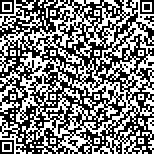| 引用本文: |
关贞军,邢若威,李祥.芪芍益肾平肝方联合左旋多巴治疗帕金森病肝肾阴虚证患者的临床研究[J].湖南中医药大学学报,2022,42(5):844-848[点击复制] |
|
| |
|
|
| 本文已被:浏览 2607次 下载 925次 |
| 芪芍益肾平肝方联合左旋多巴治疗帕金森病肝肾阴虚证患者的临床研究 |
| 关贞军,邢若威,李祥 |
| (保定市第二医院神经内一科, 河北 保定 071000;河北大学附属医院神经内科, 河北 保定 071000) |
| 摘要: |
| 目的 探讨芪芍益肾平肝方与左旋多巴联合治疗,对帕金森病肝肾阴虚证患者帕金森病评估量表(unified parkinson's disease rating scale, UPDRS)评分及平衡能力的影响。方法 选择保定市第二医院2020年5月至2021年10月收治的84例帕金森病肝肾阴虚证住院患者,经随机数字表法分为观察组及对照组,每组42例。对照组口服左旋多巴片,观察组在对照组基础上加用芪芍益肾平肝方,两组均连续治疗12周。比较两组临床疗效及治疗前后平衡能力、UPDRS和非运动症状问卷(non-motor symptoms questionnaire, NMSQ)评分,血清白细胞介素-6(interleukin 6, IL-6)、白细胞介素-1β(interleukin 1β, IL-1β)、肿瘤坏死因子-α(tumor necrosis factor α, TNF-α)、脑源性神经营养因子(brain-derived neurotrophic factor, BDNF)、神经生长因子(nerve growth factor, NGF)水平及不良反应。结果 观察组治疗总有效率为92.86%,对照组治疗总有效率为76.19%,观察组治疗总有效率明显高于对照组(P<0.05)。治疗后,观察组UPDRS-Ⅰ评分、UPDRS-Ⅱ评分、UPDRS-Ⅲ评分均明显低于对照组(P<0.05)。治疗后,观察组Breg平衡量表评分明显高于对照组,NMSQ评分明显低于对照组(P<0.05)。治疗后。观察组血清IL-6、IL-1β、TNF-α水平均明显低于对照组(P<0.05);观察组血清BDNF、NGF水平均明显高于对照组(P<0.05)。两组不良反应比较,差异无统计学意义(P>0.05)。结论 芪芍益肾平肝方与左旋多巴联合治疗帕金森病的临床疗效显著,能提高患者的平衡能力,改善非运动症状,缓解炎症反应,调节脑神经营养因子。 |
| 关键词: 帕金森病 芪芍益肾平肝方 左旋多巴 肝肾阴虚 帕金森病评估量表 平衡能力 |
| DOI:10.3969/j.issn.1674-070X.2022.05.026 |
| 投稿时间:2022-02-14 |
| 基金项目:保定市科技计划项目(18ZF223)。 |
|
| Clinical study of Qishao Yishen Pinggan Decoction combined with levodopa in the treatment of patients with liver-kidney Yin deficiency syndrome of Parkinson's disease |
| GUAN Zhenjun,XING Ruowei,LI Xiang |
| (The First Department of Neurology, Baoding Second Hospital, Baoding, Hebei 071000, China;Department of Neurology, Affiliated Hospital of Hebei University, Baoding, Hebei 071000, China) |
| Abstract: |
| Objective To explore the effect of Qishao Yishen Pinggan Decoction combined with levodopa on score of unified Parkinson's disease rating scale (UPDRS) and balance ability in patients with liver-kidney Yin deficiency syndrome of Parkinson's disease. Methods A total of 84 inpatients with liver-kidney Yin deficiency syndrome of Parkinson's disease admitted to Baoding Second Hospital were enrolled from May 2020 to October 2021. According to random number table method, they were divided into observation group (n=42) and control group (n=42). The control group was treated with levodopa, while observation group was additionally treated with Qishao Yishen Pinggan Decoction. Both groups were continuously treated for 12 weeks. The clinical curative effect and balance ability, scores of UPDRS and non-motor symptoms questionnaire (NMSQ), levels of serum interleukin-6 (IL-6), interleukin-1β (IL-1β), tumor necrosis factor-α (TNF-α), brain-derived neurotrophic factor (BDNF) and nerve growth factor (NGF), and adverse reactions were compared between the two groups before and after treatment. Results The total effective rate was 92.86% in the observation group and 76.19% in the control group, observation group was significantly higher than that in the control group (P<0.05). After treatment, scores of UPDRS-I, UPDRS-II and UPDRS-III in observation group were lower than those in control group (P<0.05). After treatment, score of Berg in observation group was higher than that in control group, and NMSQ score was lower than that in control group (P<0.05). After treatment, levels of serum IL-6, IL-1β and TNF-α in observation group were lower than those in control group (P<0.05); levels of serum BDNF and NGF were higher than those in control group (P<0.05). There was no significant difference in adverse reactions between the two groups (P>0.05). Conclusion The clinical curative effect of Qishao Yishen Pinggan Decoction combined with levodopa is significant on Parkinson's disease, which can improve balance ability and non-motor symptoms, relieve inflammatory response and regulate brain neurotrophic factor. |
| Key words: Parkinson's disease Qishao Yishen Pinggan Decoction levodopa liver-kidney Yin deficiency unified Parkinson's disease rating scale balance ability |
|

二维码(扫一下试试看!) |
|
|
|
|




